In a little less than three months, Washington State’s largest cities and counties must start following new rules on how to manage dirty runoff that washes toxic metals, oil and grease, fertilizers, and other pollution into our streams, lakes, and ocean. Polluted stormwater is one of the largest threats to Puget Sound, so it’s worth taking some time to demystify just what will be required.
The updated rules of the road are contained in the state’s new Municipal Stormwater Permits, which are administered by the Washington Department of Ecology. The permits cover everything from reducing construction pollution to educating citizens on good stormwater practices as they wash cars to adopting green low-impact development techniques like permeable pavement and green roofs.
In this blogpost, we’ll focus on updates to the Phase I permits, which go into effect on August 1, 2013 and will remain in force for five years. The permits cover discharges from large and medium municipal separate storm sewer systems, commonly known as “MS4s,” found in the most populated areas of the state. (We’ll get into the details of the Phase II permits for smaller municipalities in a subsequent post).
The Phase I permit applies to Clark, King, Pierce, and Snohomish counties; the cities of Seattle and Tacoma; the ports of Seattle and Tacoma; WSDOT; and other large permittees such as the University of Washington, Seattle School District, Metropolitan Park District of Tacoma, Washington State Military Department, Tacoma Community College, and some flood control and diking districts.
By law, those entities are required to limit polluted runoff that can flood neighborhoods, degrade fish habitat, and dump chemicals and nutrients into rivers and oceans. Here are the three biggest changes they’ll need to incorporate under the new municipal stormwater permits:
- New watershed-scale stormwater planning requirements
- New monitoring and assessment requirements
- New low-impact development (LID) requirements
Watershed-Scale Stormwater Planning
One groundbreaking requirement is that all four counties must begin to reduce polluted runoff on a watershed scale, rather than managing it town by town or construction site by construction site. These changes recognize that pollution and flooding don’t stop at city limits or the edge of a subdivision plat. That’s why, for instance, smaller jurisdictions within the watershed that are subject to the Phase II Municipal Stormwater permits must also participate in the new watershed planning process.
By October 31—a mere 6 months away—each county must pick one watershed as its initial test case. The first step is to assess current water quality, pollution levels, flow patterns, and biological health in the watershed. The second is to build a rainfall and runoff model that predicts how different land use changes and building scenarios that replace natural areas with pavement would affect all those variables. Finally, each county must submit a “watershed-scale stormwater plan” to the Department of Ecology by October 1, 2016.
Monitoring and Assessment
Phase I permittees must also provide an annual report to the Department of Ecology that describes all the stormwater studies that they or their contractors have undertaken. In addition, the cities, ports, and counties must begin monitoring in one of two ways: paying into a regional stormwater monitoring program or going it alone.
Most permittees can choose to participate in the new “Regional Stormwater Monitoring Program” (also known as RSMP) created by a coalition of federal, tribal, state, and local governments and business, environmental, agriculture, and research interests. The research program will collect information on water quality, habitat, and living creatures that are affected by stormwater in the Puget Sound basin. It will also conduct regional studies of stormwater practices and develop a publicly accessible information repository. Participants will help fund the monitoring and data analysis. (King County, for example, must pay $15,000 for the first year and $74,540 for subsequent years to participate.)
Or, Phase I permittees can also choose to instead conduct individual monitoring under the permit’s guidelines and submit an annual report to the Department of Ecology.
Because Clark County is in the Lower Columbia River watershed, it is exempt from paying into the RSMP receiving water monitoring, since that monitoring program is focused on Puget Sound. As of yet, there is no broadly accepted plan for receiving water monitoring in the Lower Columbia River watershed.
Low-Impact Development Requirements*
Finally, here’s the scoop on one of the more complicated but most exciting aspects of the new Phase I permit: the low-impact development (LID) requirements. Low-impact development stormwater systems mimic natural processes that absorb rainwater and filter pollution instead of having it cascade off hard surfaces like asphalt or roofs into expensive pipes and holding ponds.
The new Phase I permit now requires cities and counties to update their codes and make low-impact development tools such as green roofs or permeable pavement a preferred approach to handling stormwater on development and construction projects. Permittees need to incorporate low-impact development principles and best management practices (BMPs) into their local codes by July 1, 2015.
The technical guidelines that show home builders and street designers how to incorporate these LID practices—such as landscaped swales, bioretention facilities (think engineered rain gardens), and permeable pavement—into their projects are found in the Stormwater Management Manual for Western Washington (which goes by the acronym of “SWMMWW”) and the LID Technical Manual for Puget Sound. But the new permits control when LID practices must be used and, importantly, when builders are exempt from the requirements.
The triggers that dictate when and what kind of LID techniques must be used in new construction, development and redevelopment projects are spelled out in Appendix 1 to the Phase I permit (specifically, in Section 4.5). There are actually two lists of required LID practices for different types of projects, depending on how big they are, whether they’re in urban or rural areas, where the runoff goes, and other factors. A builder must consider each LID practice on the appropriate list, in the order listed, and use the first one that is feasible. For example, for roofs, bioretention facilities are to be used ahead of dispersion downspouts that flow into a gravel trench. And, for hard surfaces on the ground, permeable pavement should be used ahead of landscaped basins.
If developers don’t want to follow such proscriptive guidelines, they have another choice. Rather than using the specific LID techniques on the list, some projects can instead elect to meet a LID Performance Standard. The LID Performance Standard compares pre-development stormwater flow rates to post-development flow rates and sets standards that the project must meet.
The goal of the new requirements is to make low-impact development the “preferred and commonly used approach” to managing polluted stormwater as we clear land or redevelop urban areas. For builders and local governments that have traditionally sought to control runoff with pipes, ponds, and expensive hard infrastructure, that mandate will require a wholesale shift in thinking.
That shift has the potential to benefit homeowners who get flooded, fish that need clean water, and builders who may save money with more innovative approaches. But it remains to be seen exactly how counties and municipalities will incorporate LID practices into their codes. That process will be worth watching, and give us a better sense of how these goals embedded in Washington’s new permit will translate to the real world.
*If you decide to go look at the permit for yourself, the actual provisions for low-impact development are found in Section S5.C5 (“Controlling Runoff from New Development, Redevelopment and Construction Sites”) and Appendix 1 (“Minimum Technical Requirements for New Development and Redevelopment”).
Ashley Pedersen is an environmental attorney and policy analyst who lives in Seattle.

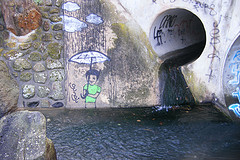

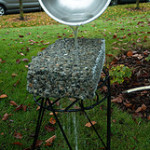
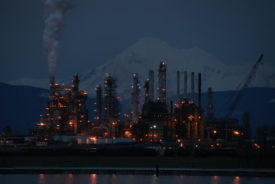
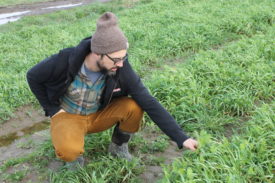
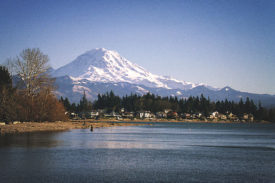
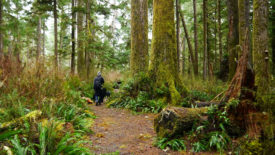
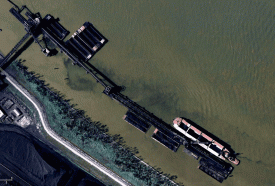


Chris Wilke
Thanks Jennifer and Ashley for covering this issue (again)!
Polluted stormwater runoff is the #1 source of toxic pollution to Puget Sound and it has been a long arduous process (over the last 6+ years) to get the permits updated with more protective language, but it is good to finally this going into effect. Although permit deadlines for changing development codes are still a ways off, some cities are well ahead of the curve and we can already see the difference in the way many sites are being developed- employing green infrastructure to control stormwater on-site like it is in nature.
Dan D. Wrye
Good job and clear writing to summarize a very complex program. Your article really makes it clear about some of the new focuses of the Permit. Some of these new areas of focus will be challenging, to say the least, but articles like yours helps to communicate that. I would like to point out that in addition to the new directions of the Permit, it also carries forth some important features from previous Permits that while perhaps not being as “sexy” as the new directions, continue to afford water quality improvements daily: specifically, maintenance and operations. Far too often, we build but don’t maintain our infrastructure. A major source of Puget Sound improvements is in fact coming from that system’s maintenance. Literally 1000’s of tons of sediments, some contaminated, are removed from stormwater systems annually. The Permit requirements imposed on the largest jurisdictions from past Permits have been woven into our communities management of those assets. This is both from a water quality perspective as well as a preservation of our public’s infrastructure.
Thanks again for the well-written article.
Robert Dashiell
Is the statement “Polluted stormwater runoff is the #1 source of toxic pollution in Puget Sound” a fact or more along the lines of an urban legend?
Are not the myriad of pharmaceutical chemicals (among many other pollutants) from Waste Water Treatment Plants a significantly greater long term toxic concern?
Bob
The EPA listed storm water runoff the #1 pollutant. So more like a fact.